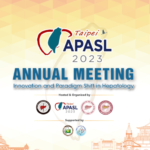
Editor’s Note: The 65th Annual Meeting of the American Society of Hematology (ASH) recently concluded, with significant contributions in the field of Chronic Myeloid Leukemia (CML) treatment. Professor Jiang Qian and her team from Peking University People’s Hospital presented multiple studies, with abstracts 867 and 869 selected for oral presentations. These reports highlighted the potential of TGRX-678 and Olverembatinib in CML treatment and overcoming drug resistance. “Hematology Frontier” had the privilege of interviewing Professor Jiang Qian on these topics.
1
Expert Interview
“Hematology Frontier”: Could you discuss the issue of drug resistance in CML treatment and the progress in this field?
Professor Jiang Qian: In the treatment of chronic myeloid leukemia (CML), a small proportion of patients face the challenge of drug resistance. Although the percentage of such patients is not high, in China with its large population, drug-resistant CML is not uncommon. Therefore, there is a significant unmet clinical need. In China, two new drugs have been approved for marketing, namely Olverembatinib and Tgrx-678. Olverembatinib has gained approval for a new indication, specifically for treating chronic-phase CML patients resistant and/or intolerant to first- and second-generation tyrosine kinase inhibitors (TKIs). This brings new hope for patients with drug-resistant CML. Tgrx-678 is a novel ABL kinase conformation inhibitor that targets the BCR-ABL fusion gene’s conformational sites, providing a new therapeutic option for CML patients resistant or intolerant to existing drugs, including those with T315I mutation resistance. It demonstrates excellent efficacy in overcoming drug resistance with minimal side effects.
“Hematology Frontier”: Could you interpret the efficacy and safety of BCR-ABL conformation inhibitor Tgrx-678 in refractory/relapsed chronic myeloid leukemia (R/R-CML)?
Professor Jiang Qian: Most previous TKIs primarily exert their anti-tumor effects by competitively binding to the adenosine triphosphate (ATP)-binding site of the kinase domain, inhibiting or reducing tyrosine kinase phosphorylation. Tgrx-678’s mechanism of action is similar to Asciminib, but with structural improvements and optimization, resulting in stronger anti-tumor activity. It specifically targets the Src-homology 3 (SH3) and 2 (SH2) domains in the BCR-ABL1 fusion protein, thereby treating CML with high specificity, minimal toxicity, and providing a new selective mechanism to overcome drug resistance.
“Hematology Frontier”: Could you discuss the value of Olverembatinib in CML treatment?
Professor Jiang Qian: In fact, Olverembatinib has made its sixth appearance at the ASH conference, with new research data presented and disclosed each time. It has entered a registered randomized phase II study, showing confident efficacy and safety data. For CML patients with the T315I mutation, Olverembatinib demonstrates remarkable effectiveness. Even in foreign CML patients who have failed ponatinib treatment, it exhibits good efficacy, providing encouraging results.

Medical Doctor, Chief Physician, Professor, Doctoral Supervisor
National Clinical Medical Research Center for Hematologic Diseases
Peking University Institute of Hematology
Deputy Chief of Hematology Department, Peking University People’s Hospital
Research Interests: Acute and Chronic Leukemias, Myeloproliferative Neoplasms, and other hematologic diseases; profound expertise in clinical research on Chronic Myeloid Leukemia (CML)
Member of the National Representative Committee of the International CML Foundation (iCMLf)
Member of the Hematology Branch of the Chinese Medical Association, Deputy Head of the Leukemia-Lymphoma Group
Vice Chairman of the Hematology Branch of the Beijing Medical Association
Vice Chairman of the Hematology Specialty Committee of the China Association of Chinese Medicine
Deputy Chairman of the Hematology Professional Committee of the China Association of Medical Education
Deputy Chairman and Chief Committee Member of the Leukemia Academic Working Committee of the Hematology Branch of the Chinese Society of Geriatrics
Editorial Board Member of Leukemia Research, Chinese Journal of Hematology, Chinese Journal of Experimental Hematology, and Journal of Clinical Hematology
Principal Investigator for multiple National Natural Science Foundation projects; published over 100 articles in Chinese and English journals such as Blood, Leukemia, and American Journal of Hematology.

